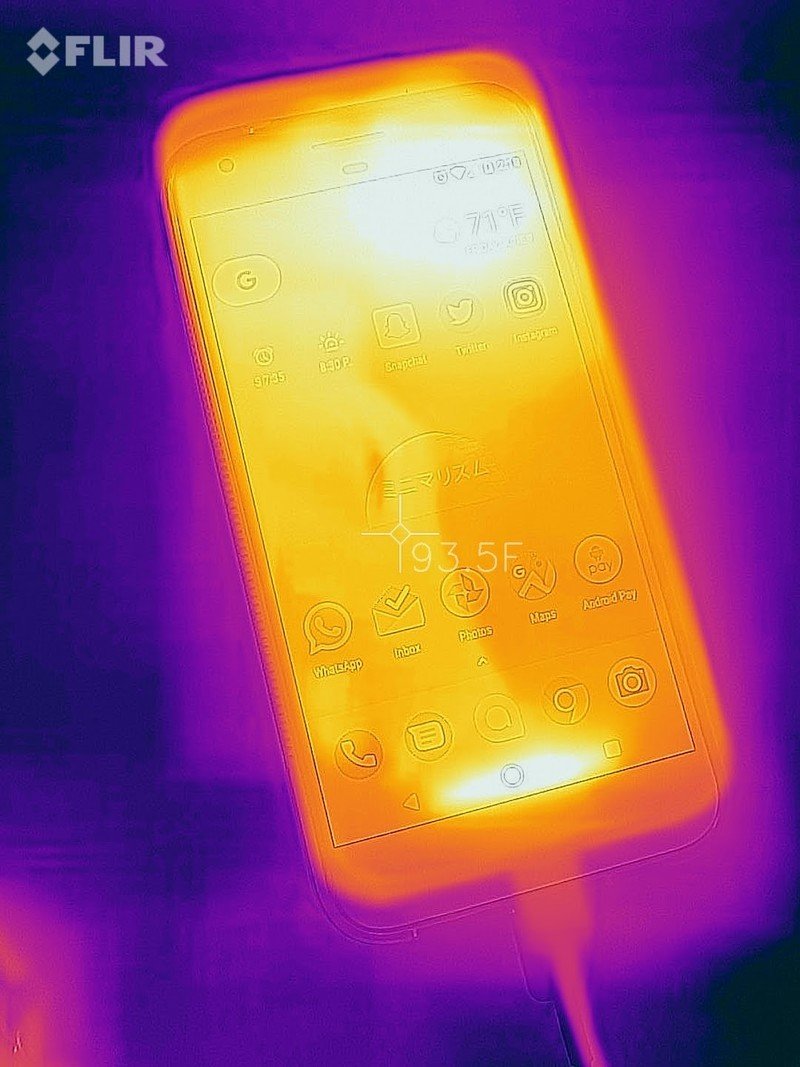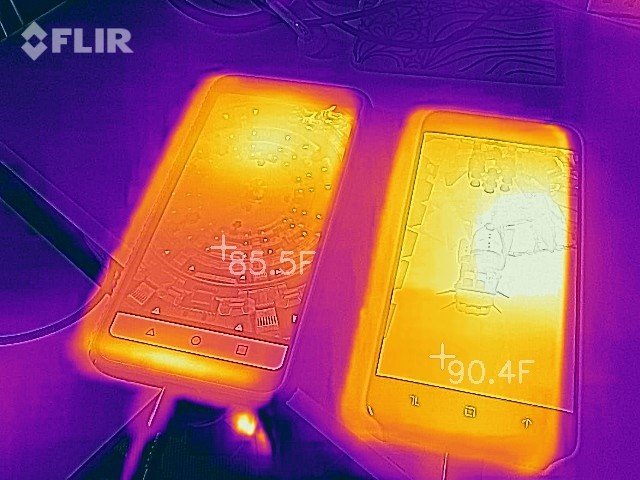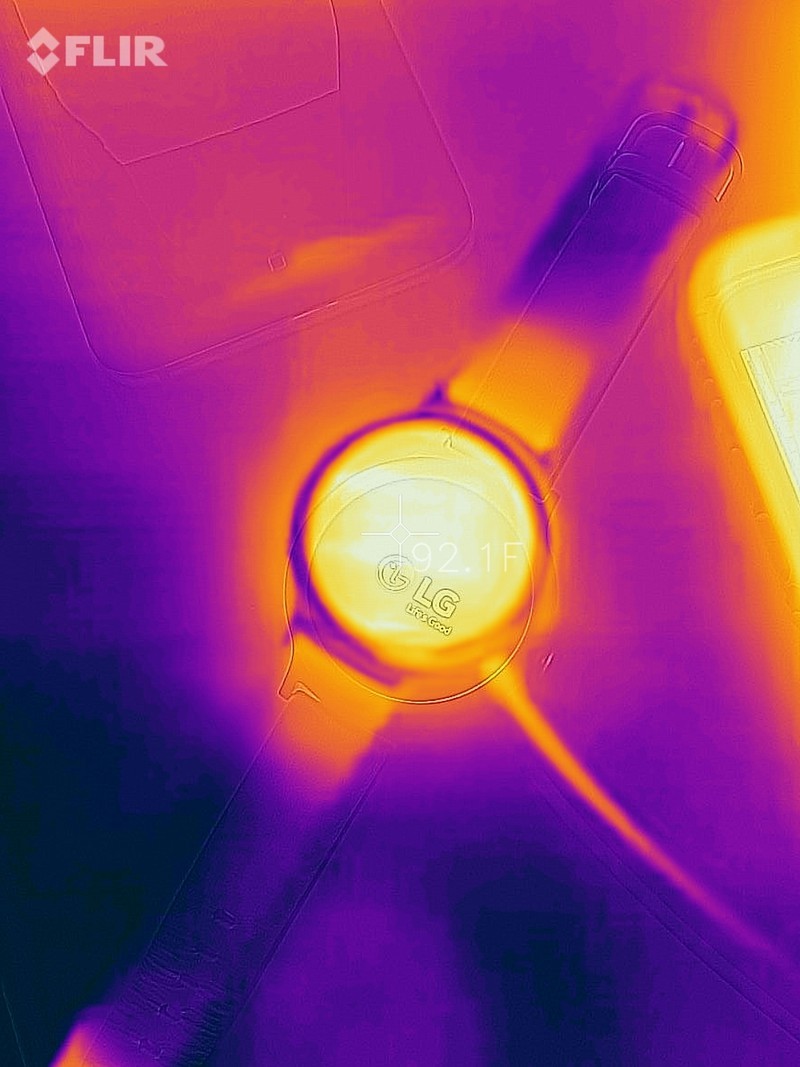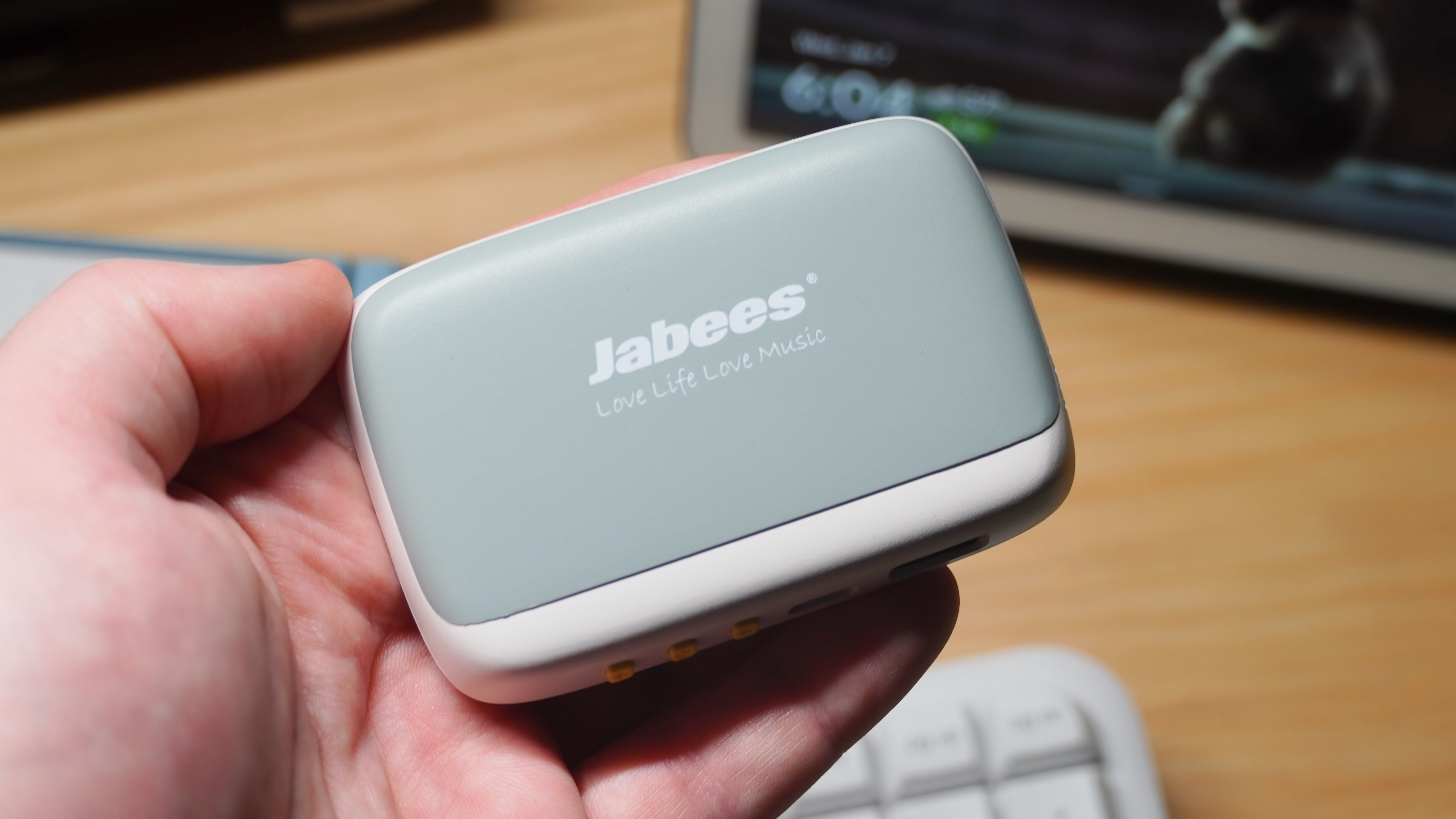How hot is your Android smartphone?
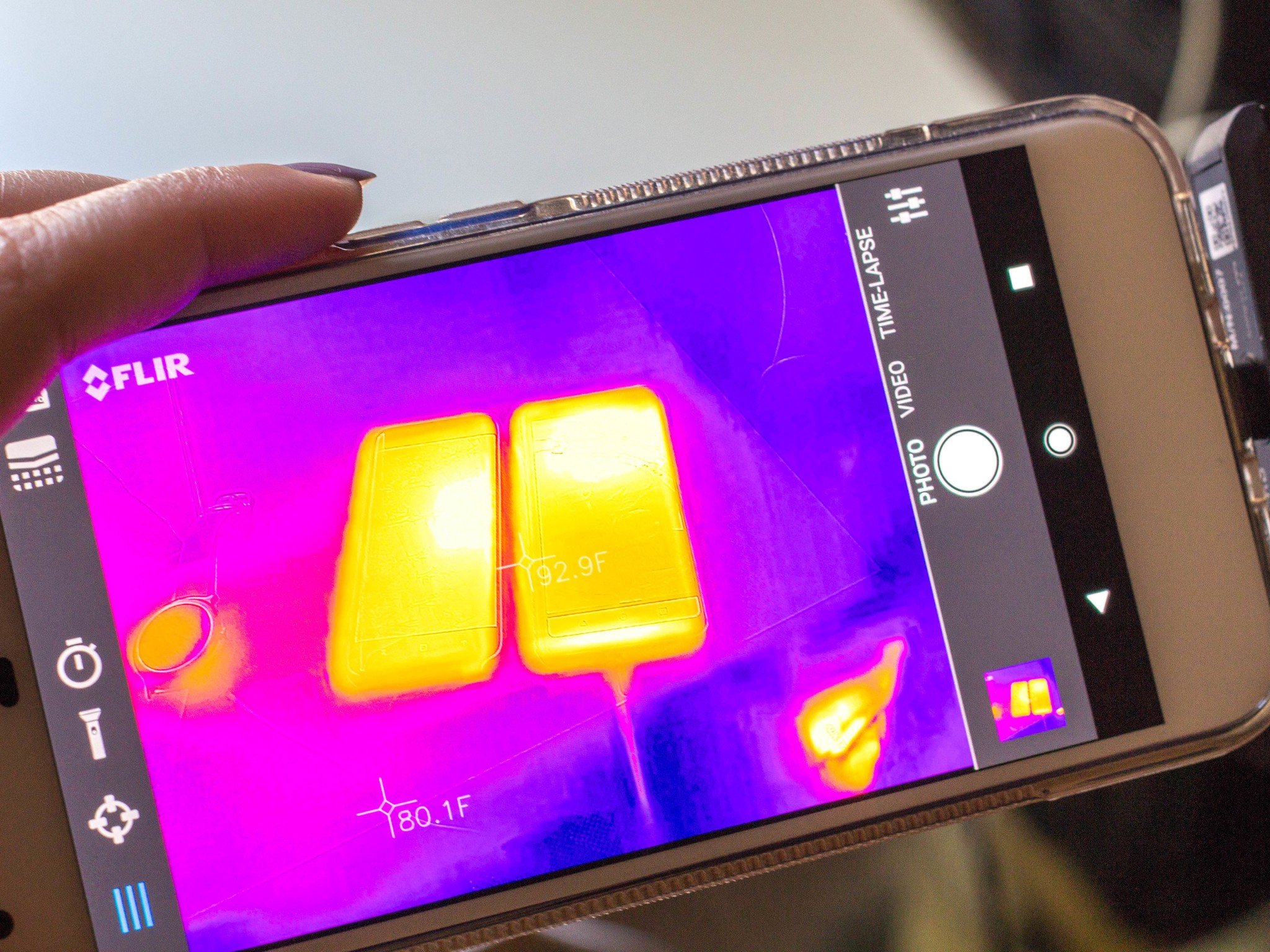
Naturally, when you're equipped with a thermal imaging camera, you want to point it at all the things. The FLIR One Pro thermal imaging camera is certainly fun to play with, even though its battery life is finicky. I rounded up a couple of the latest Android-powered smartphones I had laying around, including the LG G6, Galaxy S8, and Pixel XL, to see how hot they become (if at all) when they're plugged in and running a benchmark. Why the heck not?
Note: I'm using a version of the FLIR One Pro thermal camera that's running on beta software.
As they lay charging
The temperatures of the Galaxy S8 (left), LG G6 (middle), and Pixel XL (right) as they're charging with the screens on at high brightness.
It took a while for the FLIR One Pro to charge up enough to shoot the three smartphones. I pointed the One Pro at a Galaxy S8 as it charged through a USB-C cable connected to an Aukey power strip. It measured in at about 89 degrees Fahrenheit. The LG G6 measured in around 84 degrees. Both had their screens set on to full brightness.
The Pixel XL measured in surprisingly warmer at nearly 94 degrees. It was charging from the same power strip, with the screen brightness on full blast. The FLIR One Pro simply reinforces what I've been thinking for the past eight months: the Pixel XL runs hot.
While they're benchmarking
Have you ever seen how hot a smartphone becomes when it's plugged in, throttling, and running a graphics-intense benchmark at the same time? That's what the FLIR One Pro can show you. In this case, we have a very warm set of phones, all of which are running the 3DMark benchmark suite while charging from the same power strip.
Here's the Pixel XL benchmarking (left), as well as the Pixel XL running Snapchat (right).
Get the latest news from Android Central, your trusted companion in the world of Android
Of course, we can't overlook the fact that there are two different processors at play here. The Pixel XL and LG G6 are both running on a Snapdragon 821 processor, while the Galaxy S8 is powered by a Snapdragon 835. Both processors have different GPUs, too, though none of that seemed to really affect the temperature of either device while it was powering through 3DMark and filling up on battery. In fact, the overall heat output of each phone seem to correlate more with the brightness of each screen. For instance, perhaps the G6 measured the lowest because its screen was the dimmest of the three.
What about a smartwatch?
What about a smartwatch? Unfortunately, it was not a warm-enough day for me to show how truly heated an Android Wear watch like the LG Watch Style gets — or at least, seems to get, based on my own anecdotal experience — but it sure is dormant when it's not being bombarded with app notifications. Interestingly, when it's charging, it measures in at about the same temperature as the Pixel XL.
Where else should we feel the heat?
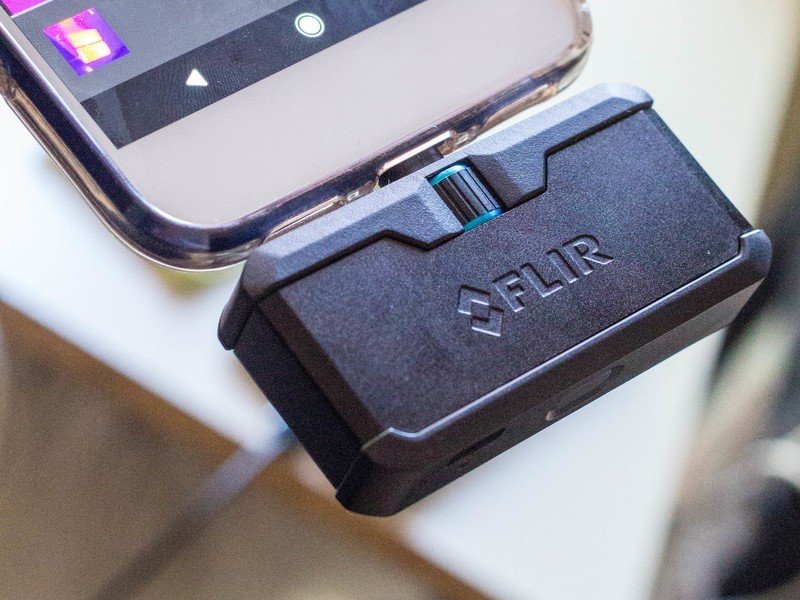
Not only is thermal imaging such great fun, but we're also still in the midst of testing out the FLIR One Pro. We're planning to shoot plenty more gadgets with it. Perhaps a networking module like Google Wi-Fi, or the NEST camera while it's on? We're taking requests!

Florence Ion was formerly an editor and columnist at Android Central. She writes about Android-powered devices of all types and explores their usefulness in her everyday life. You can follow her on Twitter or watch her Tuesday nights on All About Android.

